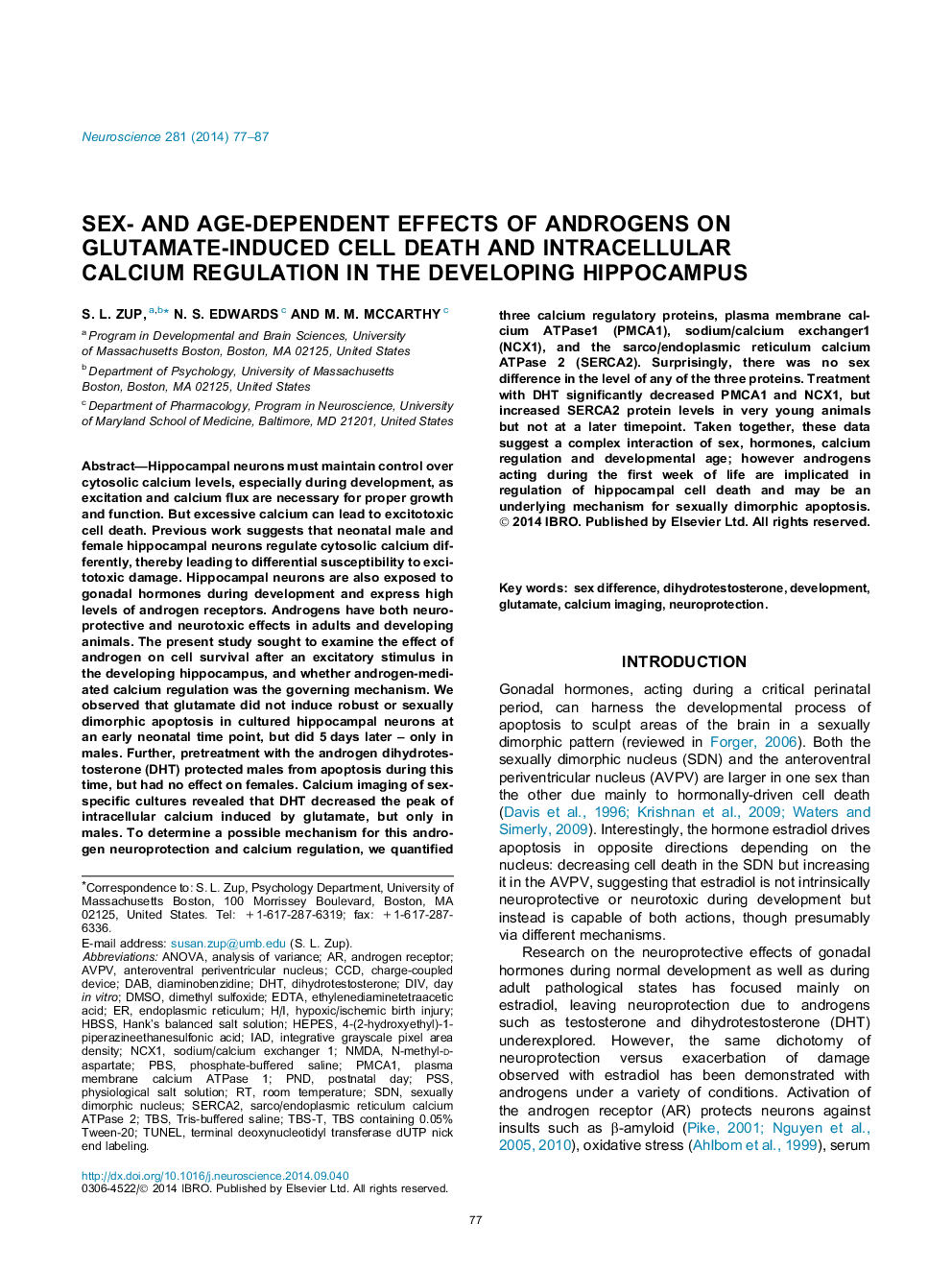| کد مقاله | کد نشریه | سال انتشار | مقاله انگلیسی | نسخه تمام متن |
|---|---|---|---|---|
| 6273222 | 1614795 | 2014 | 11 صفحه PDF | دانلود رایگان |
- Androgens can be neuroprotective or neurotoxic.
- Hippocampal neurons are differentially affected by glutamate depending on sex.
- DHT decreases calcium influx and cell death after glutamate application, but only in males.
- Levels of calcium regulatory proteins do not differ by sex, but are altered by DHT.
- These sex and androgen effects change during the first week of life.
Hippocampal neurons must maintain control over cytosolic calcium levels, especially during development, as excitation and calcium flux are necessary for proper growth and function. But excessive calcium can lead to excitotoxic cell death. Previous work suggests that neonatal male and female hippocampal neurons regulate cytosolic calcium differently, thereby leading to differential susceptibility to excitotoxic damage. Hippocampal neurons are also exposed to gonadal hormones during development and express high levels of androgen receptors. Androgens have both neuroprotective and neurotoxic effects in adults and developing animals. The present study sought to examine the effect of androgen on cell survival after an excitatory stimulus in the developing hippocampus, and whether androgen-mediated calcium regulation was the governing mechanism. We observed that glutamate did not induce robust or sexually dimorphic apoptosis in cultured hippocampal neurons at an early neonatal time point, but did 5Â days later - only in males. Further, pretreatment with the androgen dihydrotestosterone (DHT) protected males from apoptosis during this time, but had no effect on females. Calcium imaging of sex-specific cultures revealed that DHT decreased the peak of intracellular calcium induced by glutamate, but only in males. To determine a possible mechanism for this androgen neuroprotection and calcium regulation, we quantified three calcium regulatory proteins, plasma membrane calcium ATPase1 (PMCA1), sodium/calcium exchanger1 (NCX1), and the sarco/endoplasmic reticulum calcium ATPase 2 (SERCA2). Surprisingly, there was no sex difference in the level of any of the three proteins. Treatment with DHT significantly decreased PMCA1 and NCX1, but increased SERCA2 protein levels in very young animals but not at a later timepoint. Taken together, these data suggest a complex interaction of sex, hormones, calcium regulation and developmental age; however androgens acting during the first week of life are implicated in regulation of hippocampal cell death and may be an underlying mechanism for sexually dimorphic apoptosis.
Journal: Neuroscience - Volume 281, 5 December 2014, Pages 77-87
